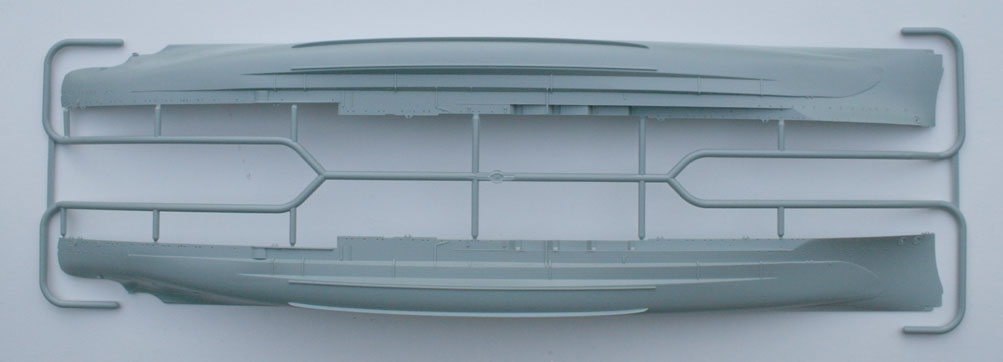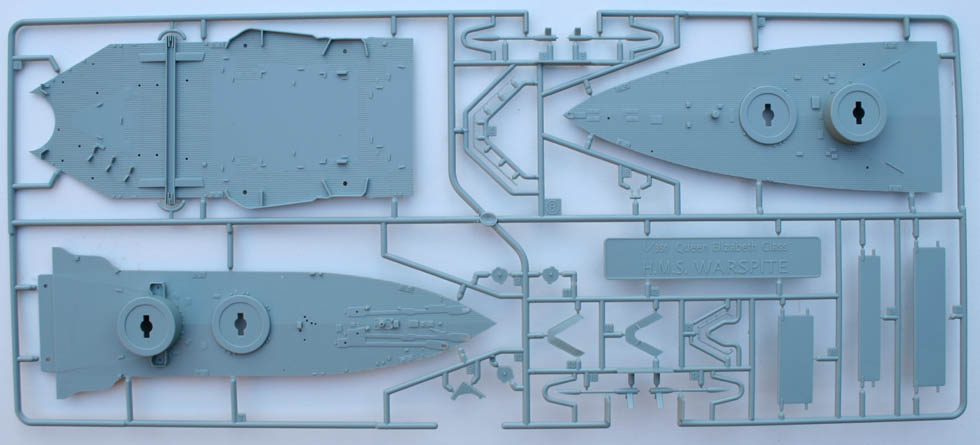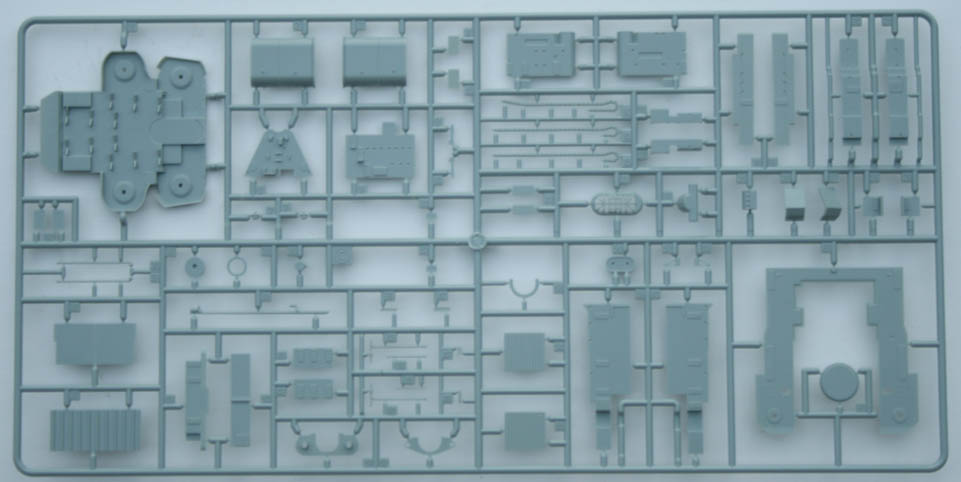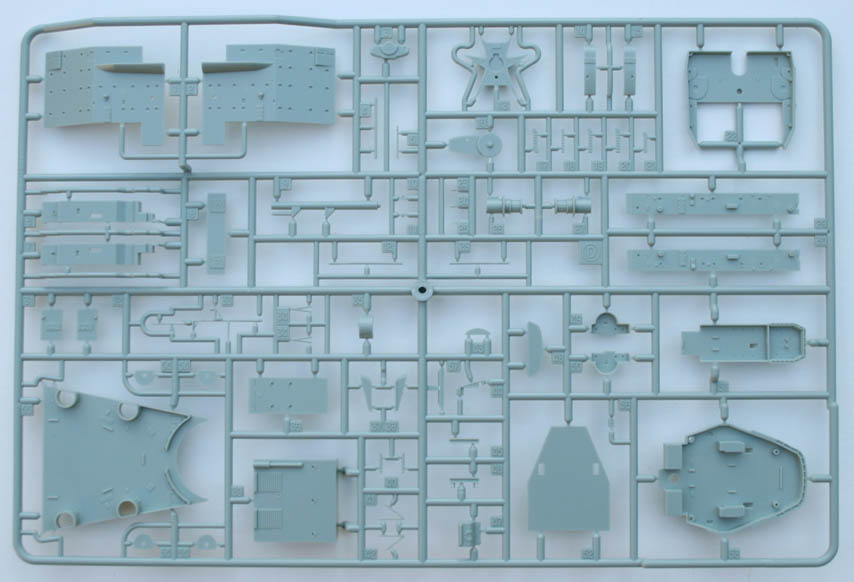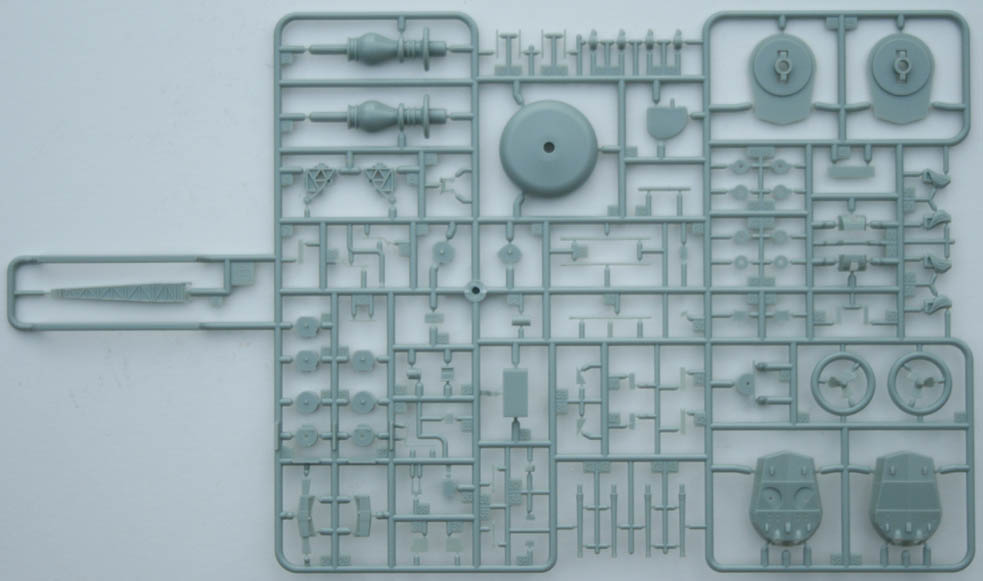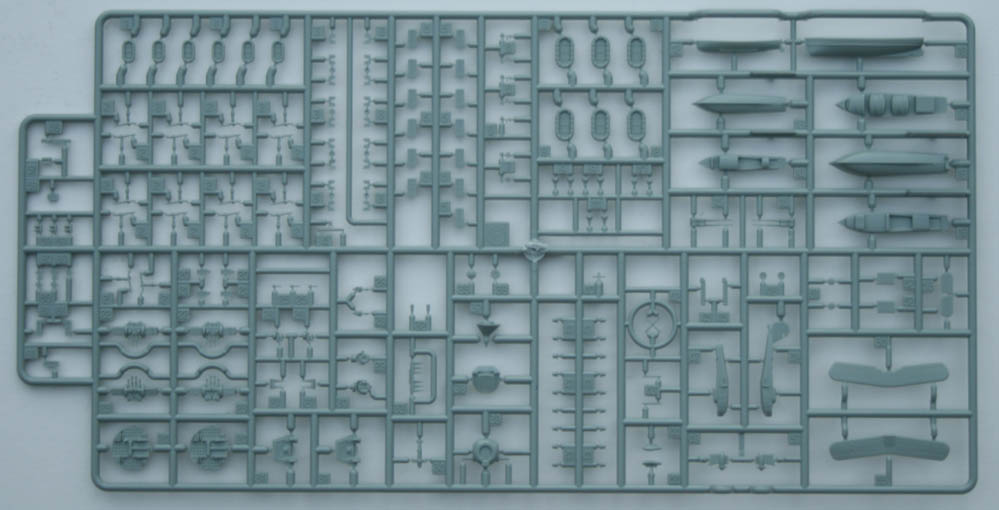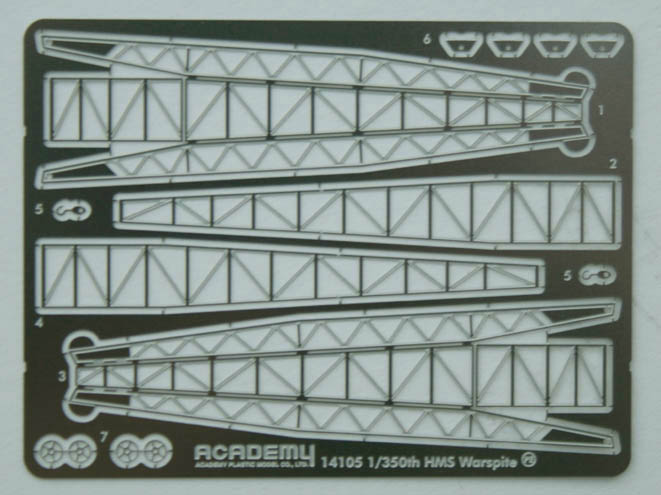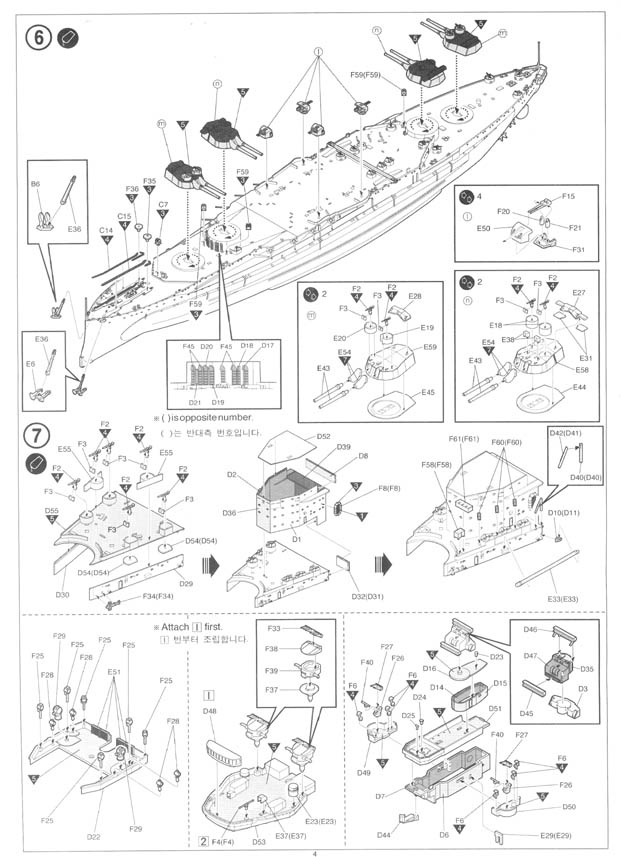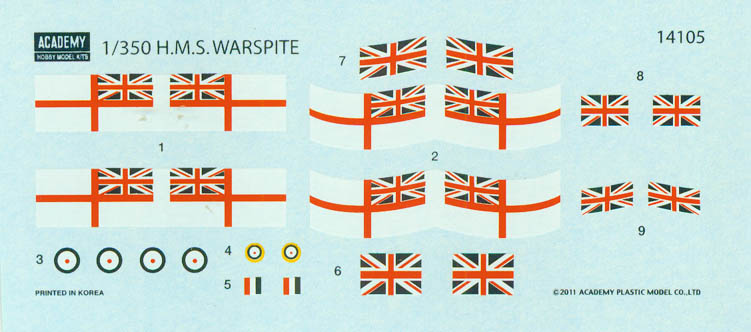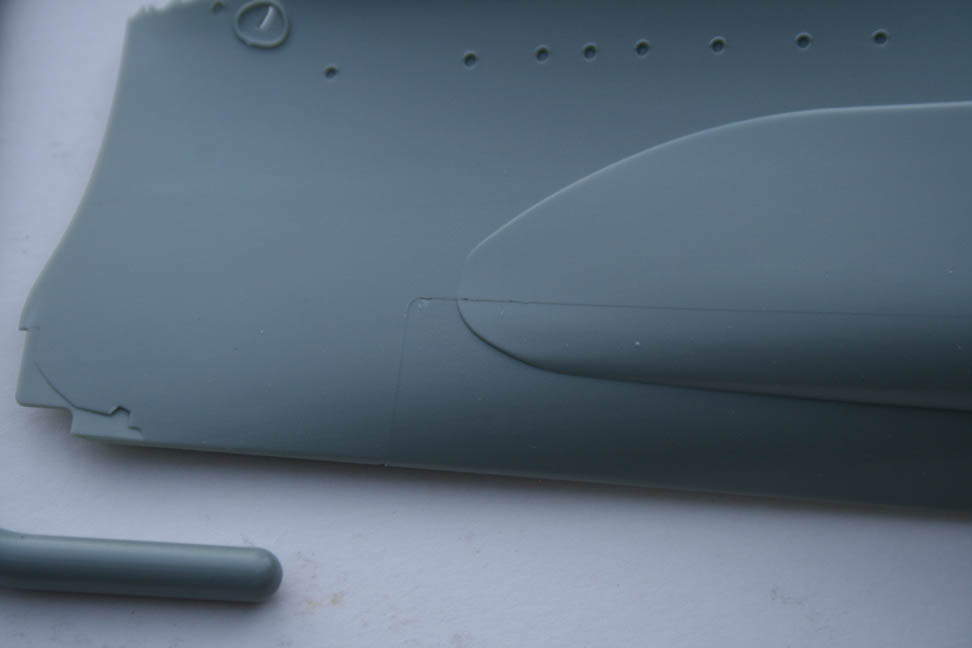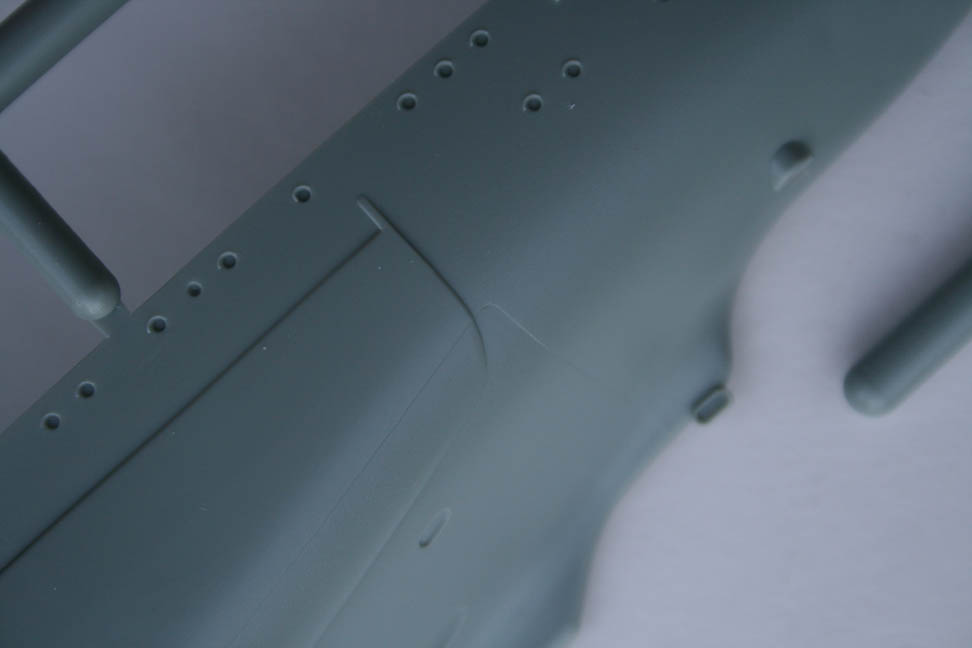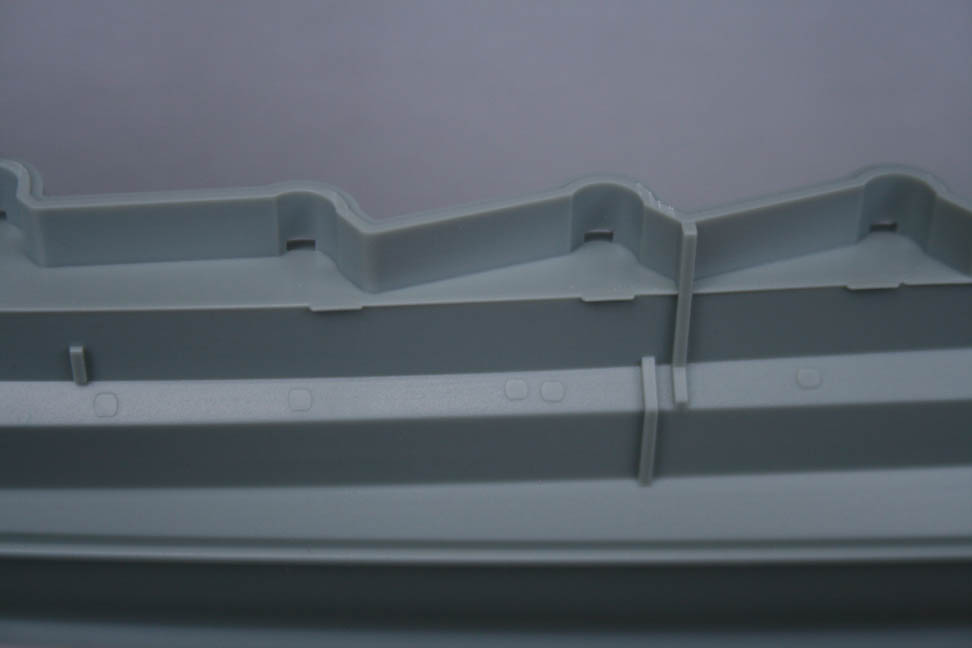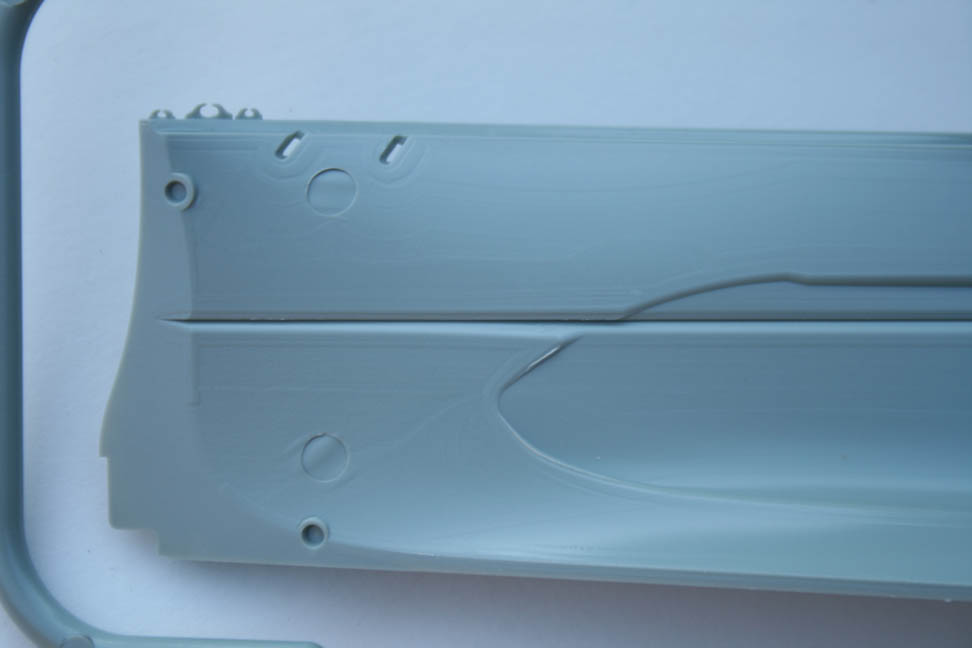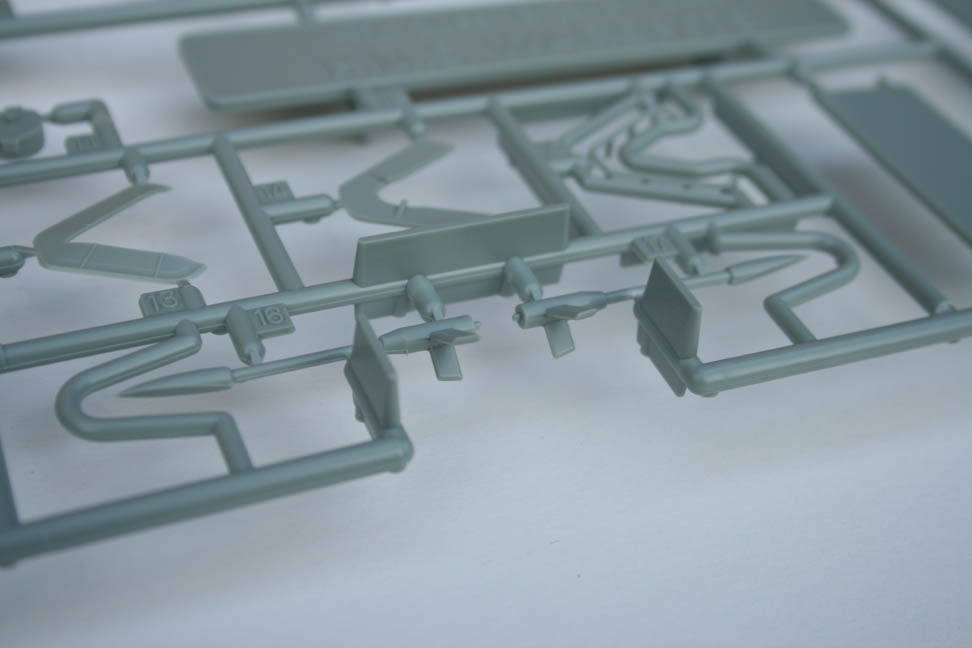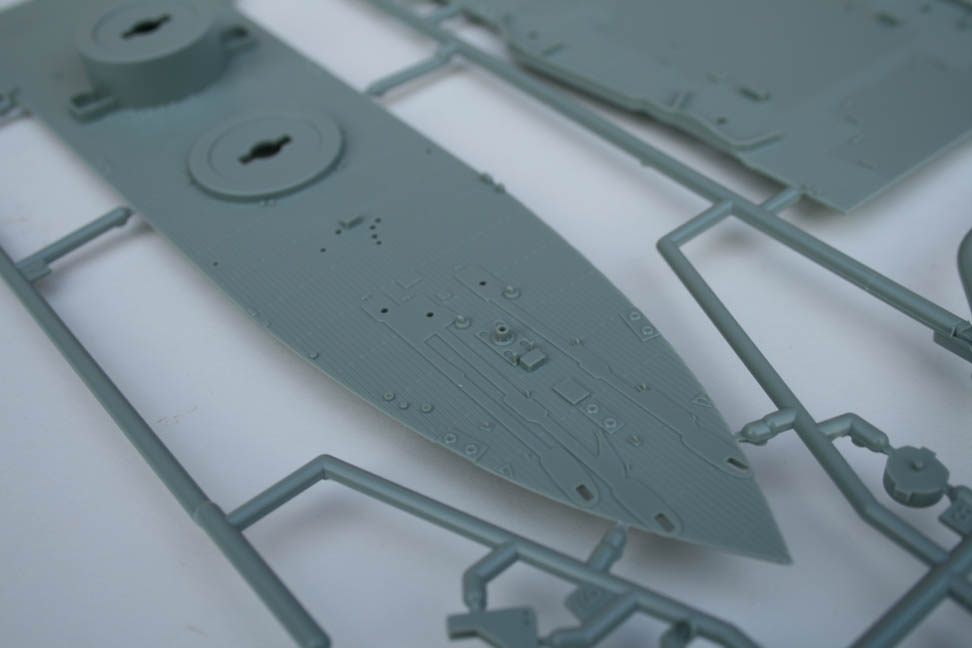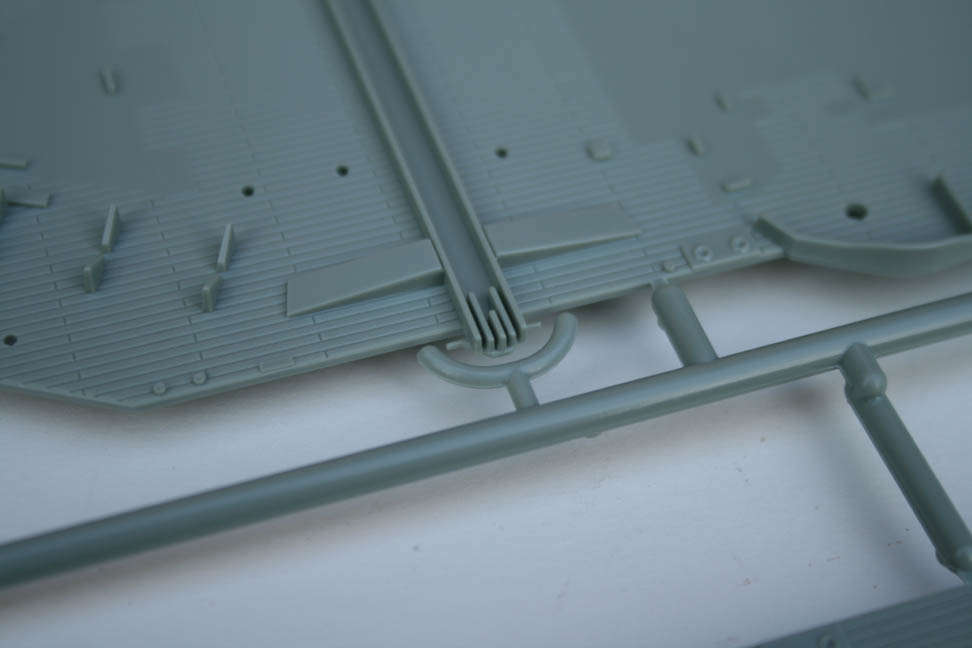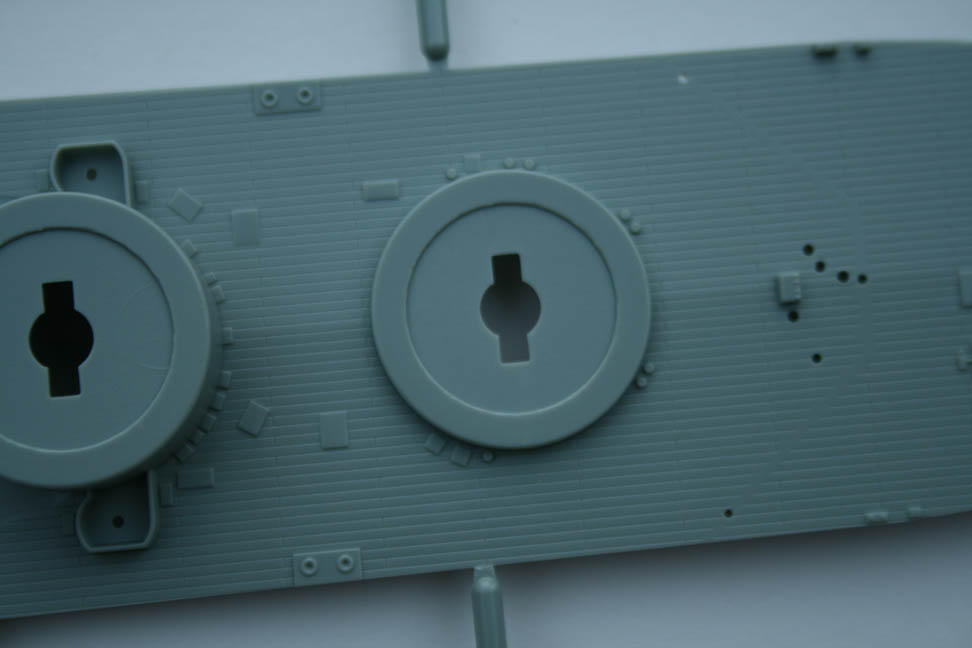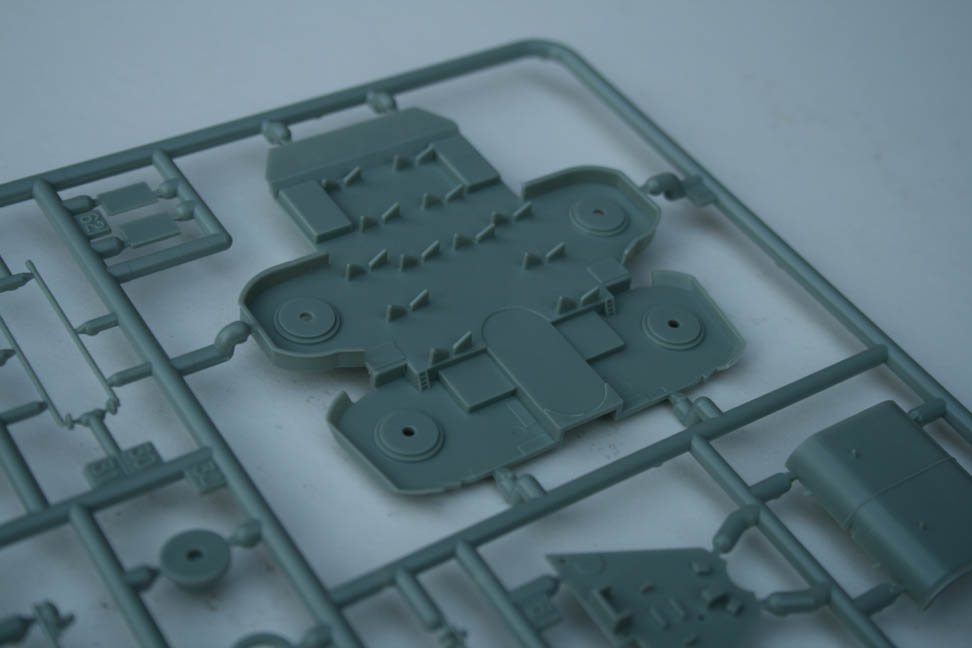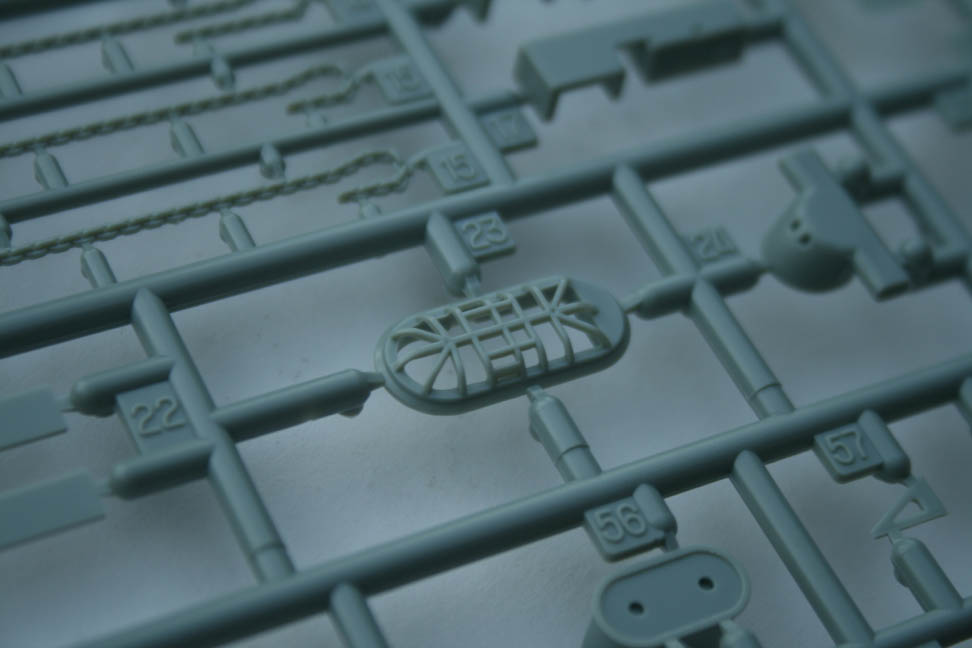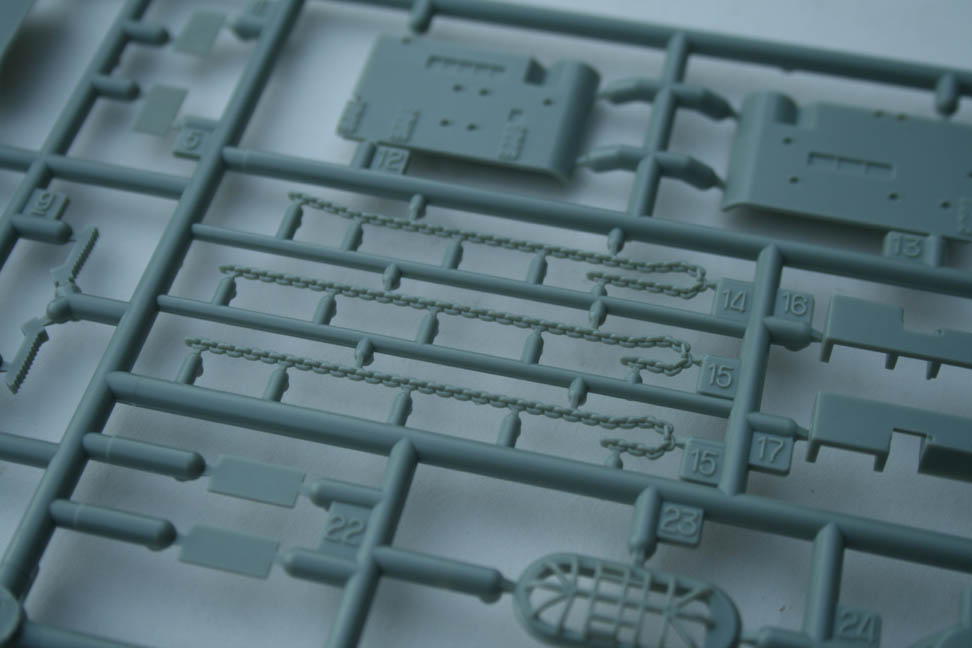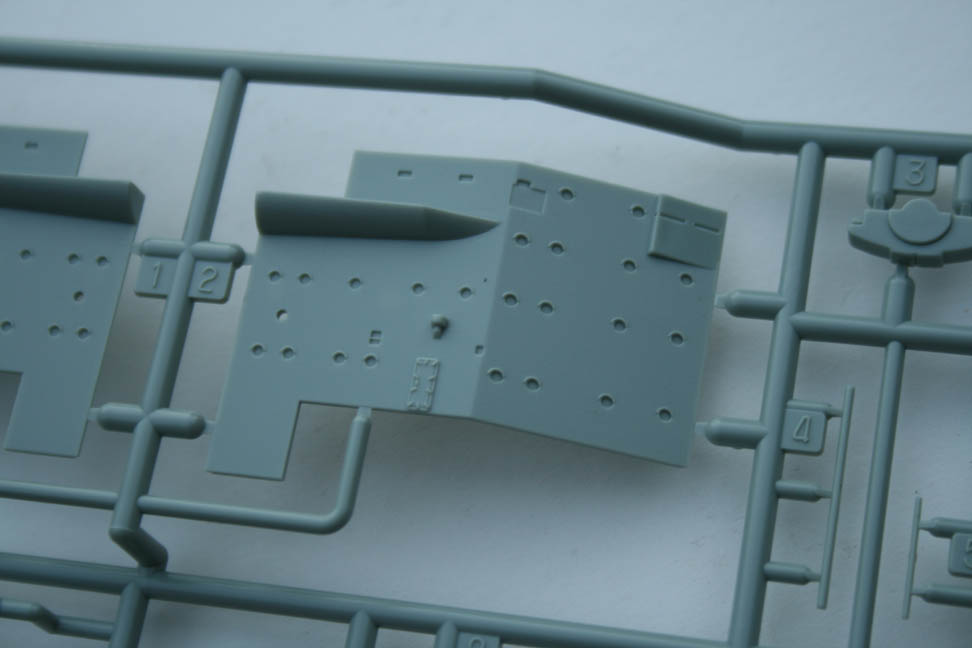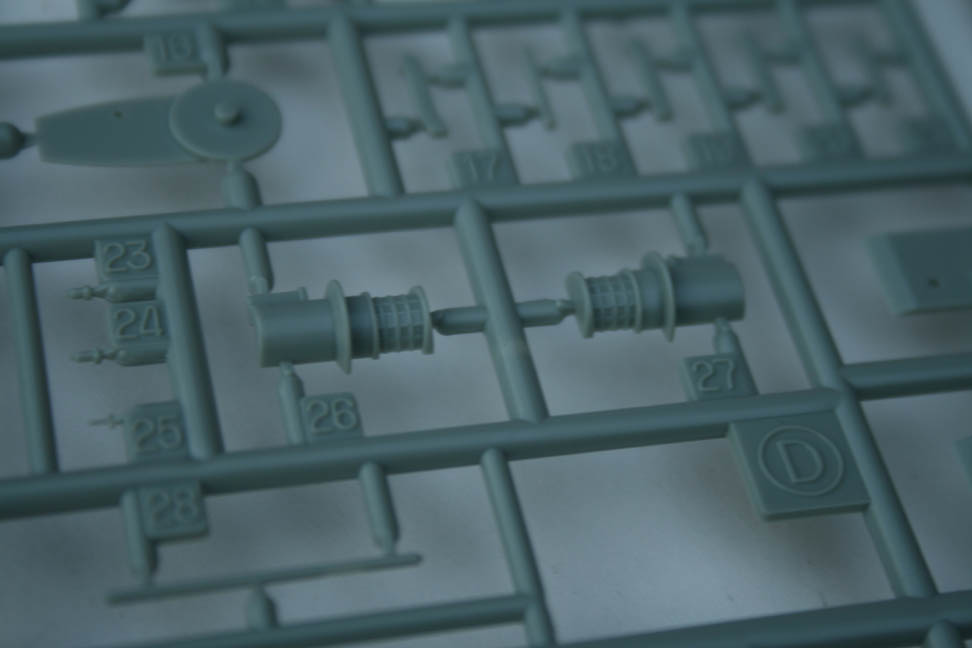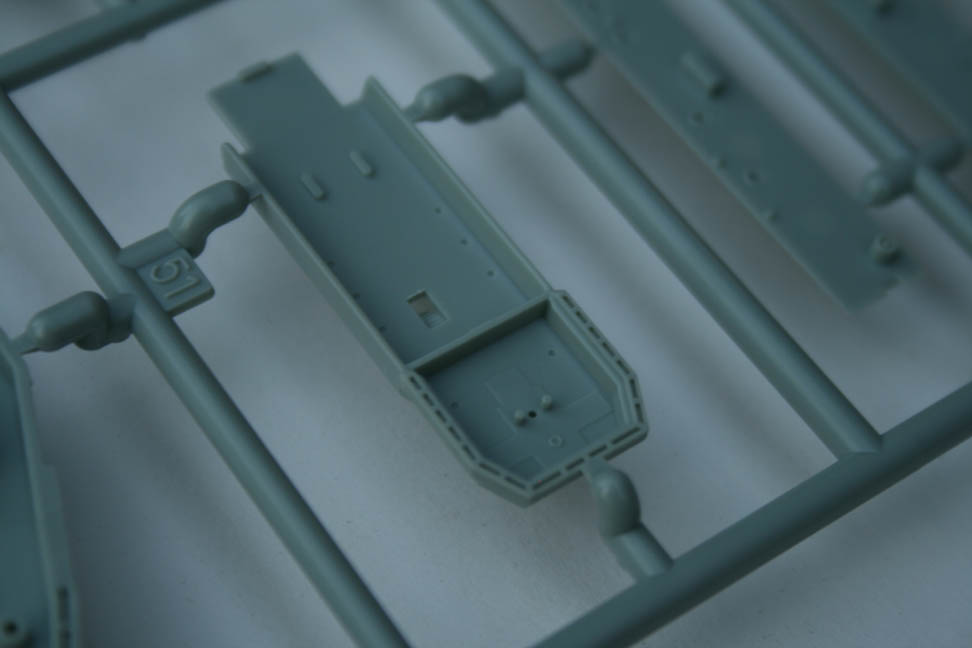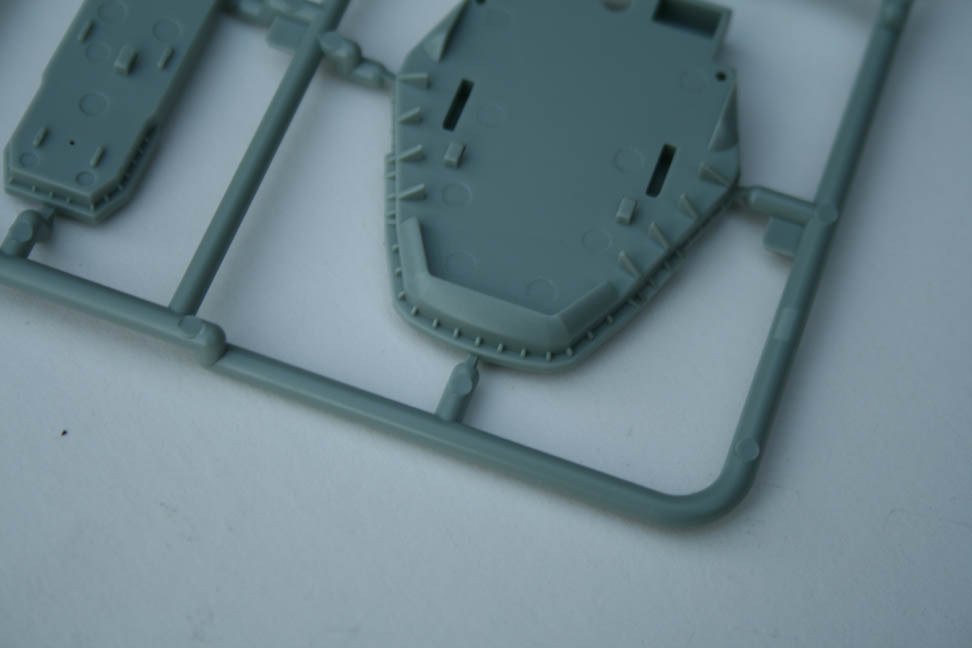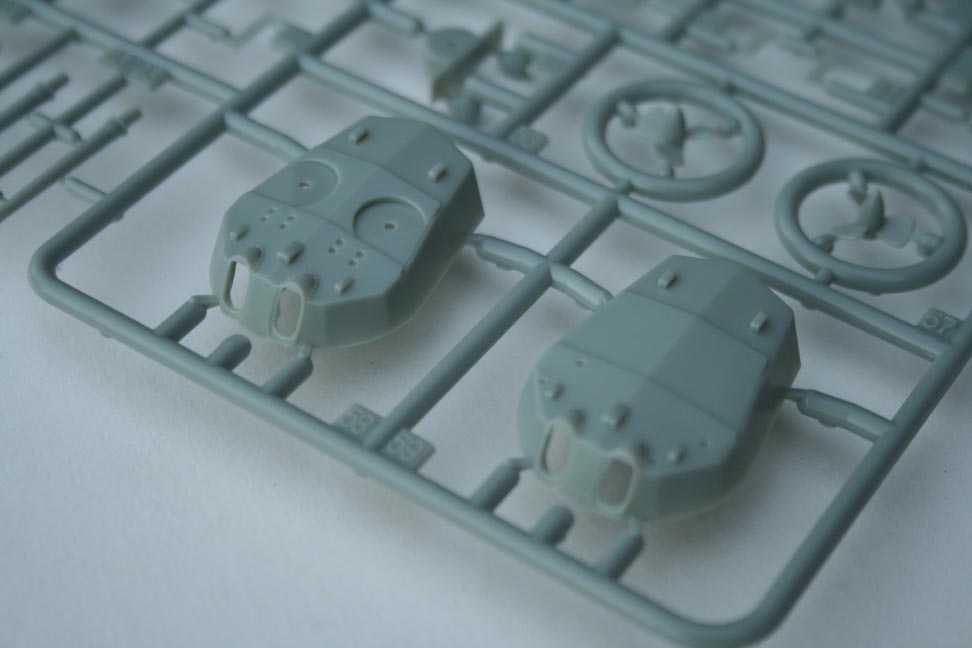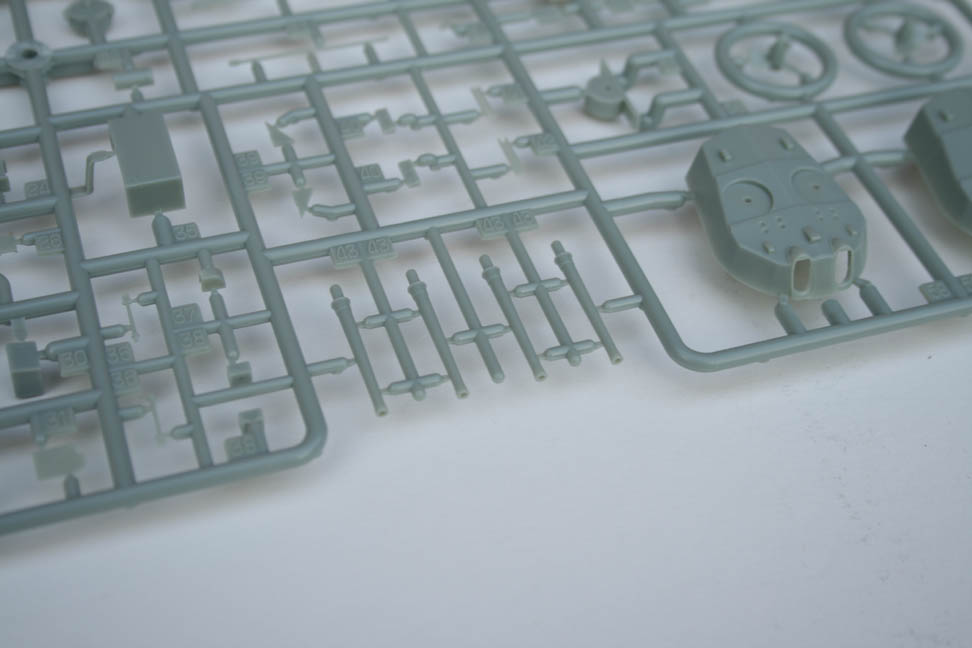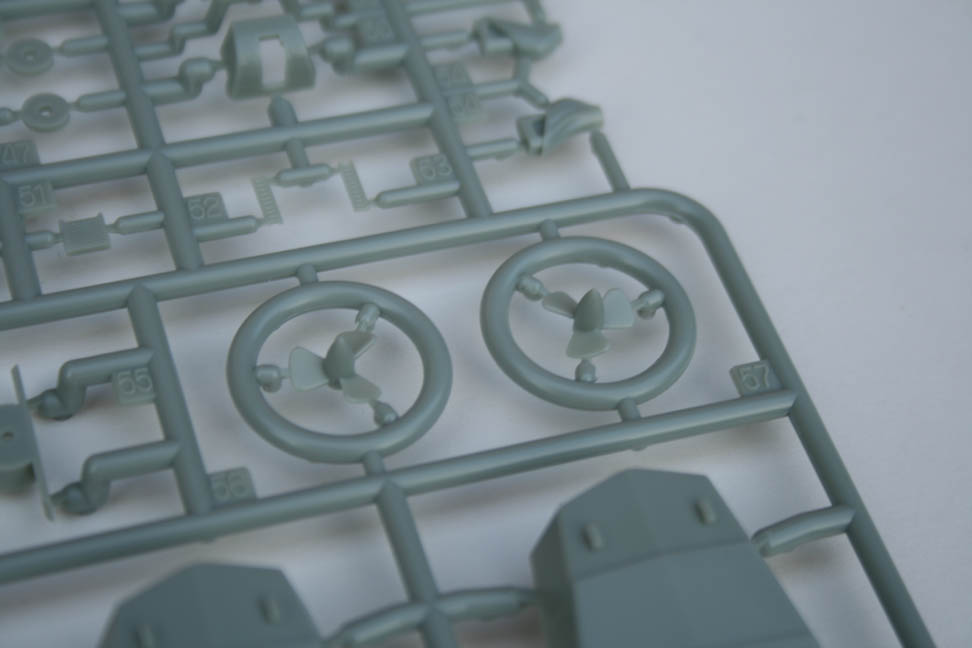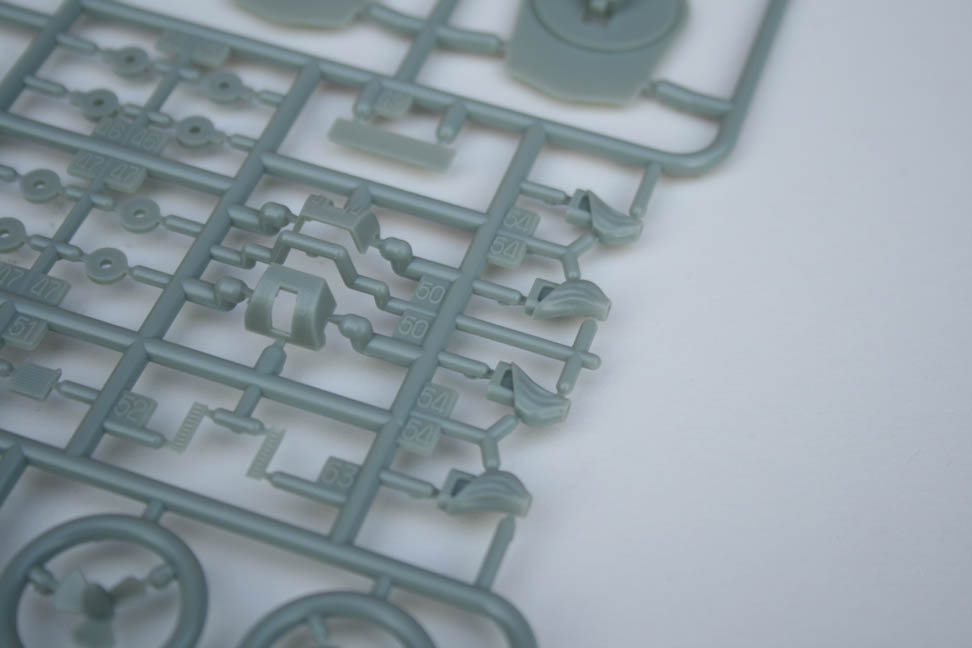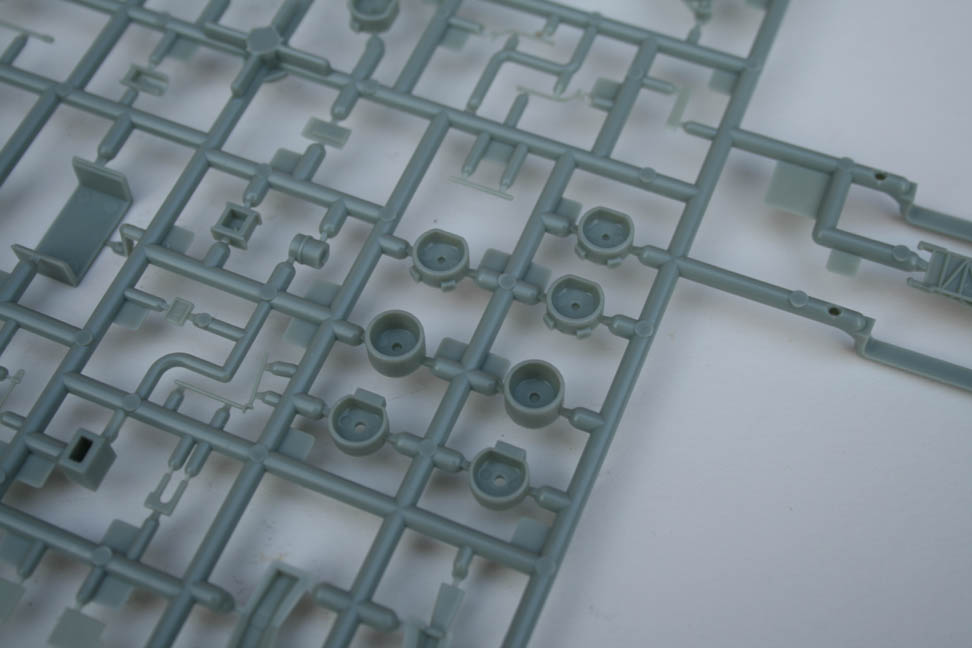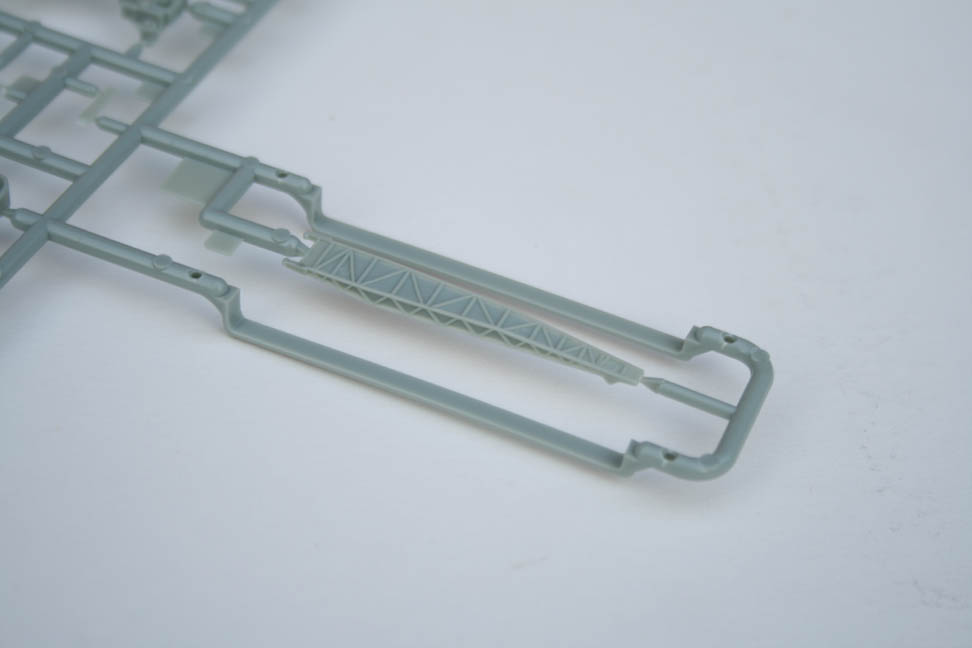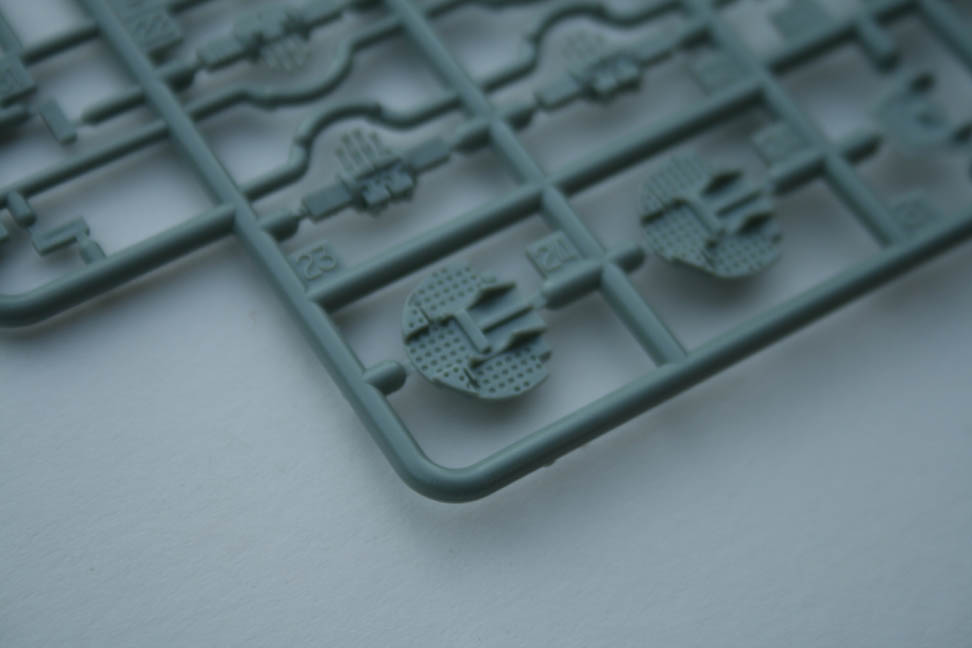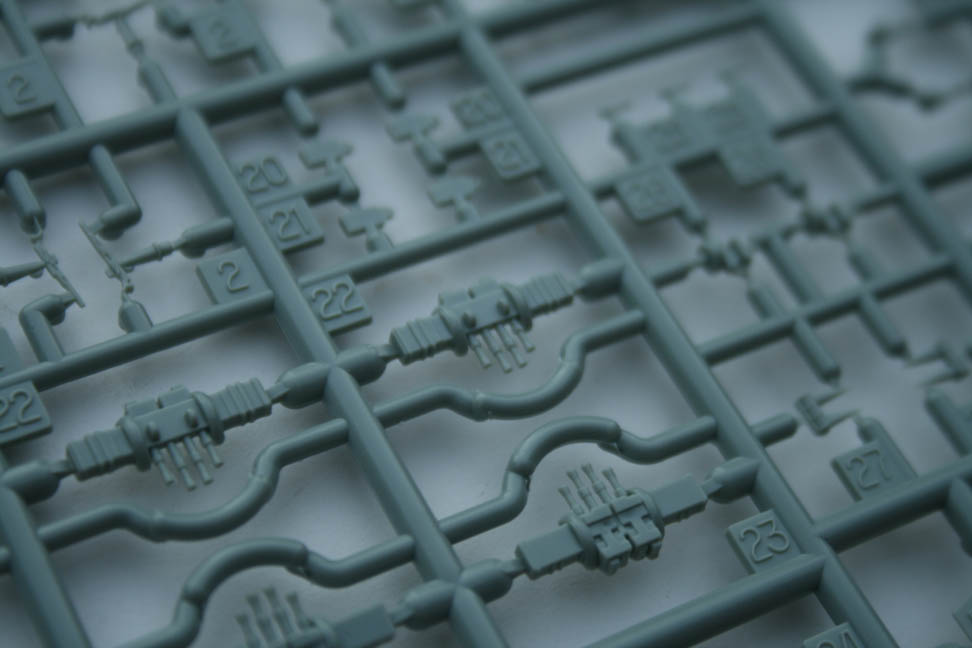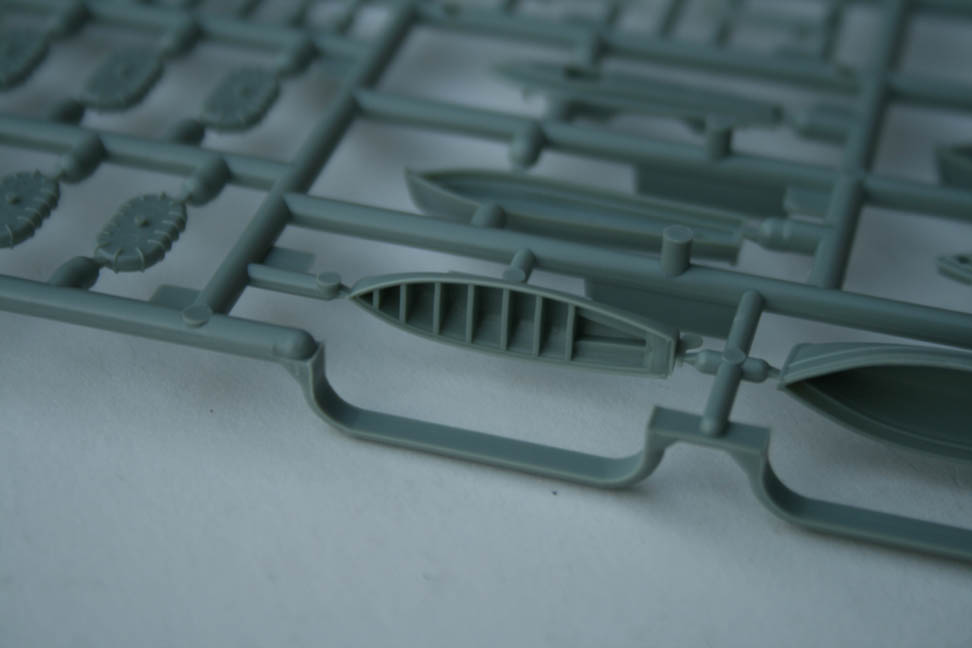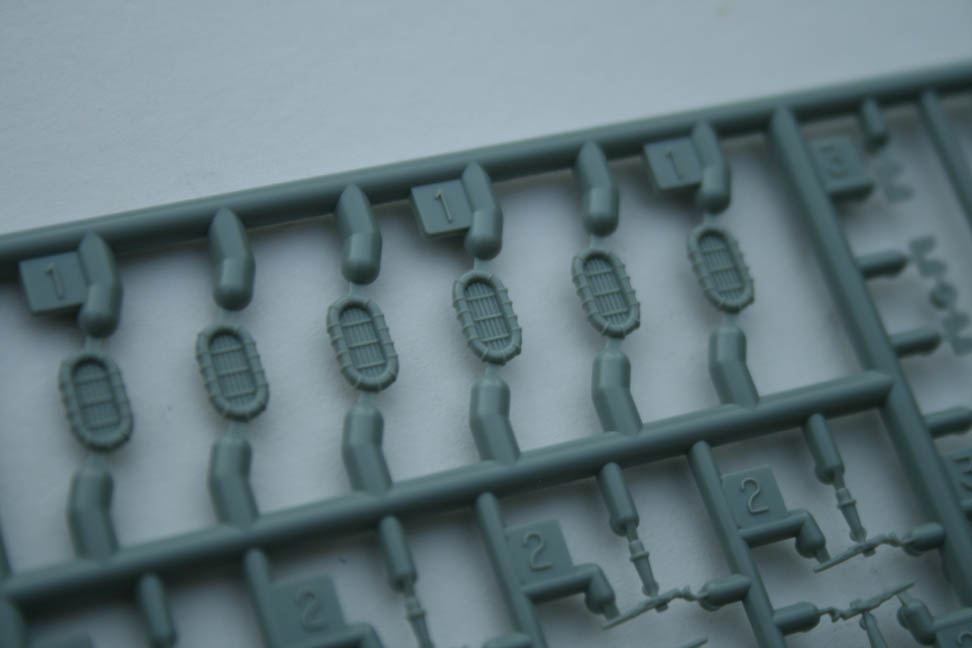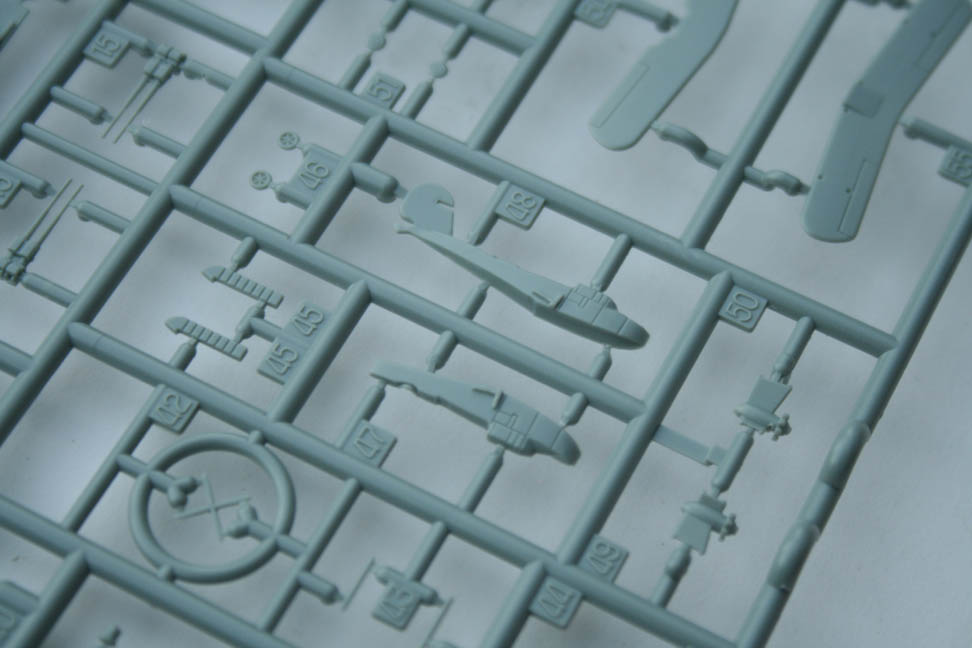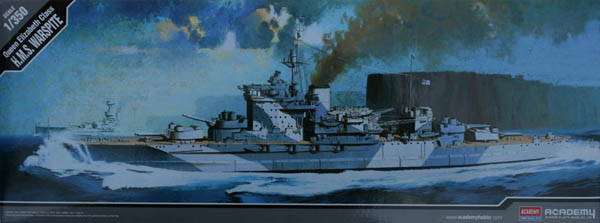
Academy 1/350 HMS Warspite
By Tracy White
Overview
The five ships of the Royal Navy's Queen Elizabeth class battleship were commissioned in time to take part in the First World War's epochal naval Battle of Jutland, yet were still serving at the outbreak of the Second World War. Of these, HMS Warspite was the navy's most successful, earning more battle awards than any other ship in navy history and setting the record for the longest gun hit on a moving target by a ship when she landed one of her 15 inch shells on the Italian battleship Giulio Cesare, 26,000 yards (nearly fifteen miles) away.
Until recently the only kit available of this famous ship was either in 1/700th scale plastic of 1/350th resin, so Academy's release of a 1/350 Warspite in plastic has certainly caused much excitement for the fans of the Royal Navy. Let's examine what you get in the kit:
Tree "A" - Hull pieces
The hull of the model is full hull; broken down into left and right (port and starboard) pieces, with a groove molded into the inside surfaces to be used as a guide if the builder desires a waterline model It my experience this is one of the best ways a company can cater to both camps; the full-hull builders have only one seam to clean up whereas the waterline builders have a relatively easy and accurate method to remove the lower hull area. There is a cut-out on the bow near the keel for a separate paravane foot tip piece.
The hull pieces were formed with a multi-part mold, allowing for a good representation of details such as the bilge keels, porthole eyebrows, and access hatches at the top of the hull blisters. There is a slight mold-mismatch fore and aft of the blisters resulting in steps on the hull surface, (see gallery at bottom) but they should be fairly easy to fill and sand, being pretty shallow.
Parts are included on other trees for details such anchors, props, shafts, and rudders.
Tree "B" - Main Deck Pieces, hull supports, and prop shafts
Tree B contains a total of 19 parts; the three main deck pieces, display name plate, prop shafts, a forecastle deck water break, and internal hull supports. In my opinion this shows a clear step up from their Graf Spee kit, reviewed here. Academy dispensed with the plastic railings that left hols in the deck that were tedious to fill if not being used, and populated it with lots of clearly-defined details (albeit a bit overscale and soft in areas). Deck planking is also overscale, but no more so than any other manufacturer.
There is an attempt at representing the deck's camber, or slight upward curve, but it is a bit simplified, being two slight angles that meet at the centerline in a shallow peak; it's somewhat noticeable if you catch it in the right light. The tree also has some extra platic to protect some fragile details on the catapult ends.
Test fitting of the joint between the two forward deck pieces showed some interference by the re-enforcement tab on the bottom of the larger piece, but this is so common with this arrangement that I always just saw the tabs off as a rule.
All four prop shafts and struts are on this tree, and appear to be nicely done. Very little exists in the way of seams that must be cleaned up, and the struts have a nice taper fore and aft that means less re-work than other companies that have squared pieces as a regular feature. There should be a bit more of a fillet on the struts as they approach the shafts, however. The thicker shaft portion that interfaces with the hull has nice crisp edges that suggest less work in filling any gaps; I suspect it'll be a simple shot of Mr. Surfacer and a Q-tip rub with Mr. Color thinner for these pieces.
Tree "C" - Midships Superstructure Decks & Pieces
The third tree contains the structural elements for the midships and aft superstructures and deck platforms, including the stack and aircraft hangar bays. The hangar bays are shown closed, but there is internal structure detail and the full roller doors will be easily opened by scoring a segment a couple of times with a sharp knife and then bending to weaken an break off the portion the builder wants to remove. Some extra detailing will be necessary to pull this off, however, as there are no aircraft handling carts or working platforms included.
Construction of this section of the ship is made up of flat and angled pieces; due to the somewhat complex shapes there are a lot of them; I count twety-five pieces just for the basic structure before adding details such as anti-aircraft guns and boats. This is an area where cost versus work is a consideration; Academy could have reduced parts count by using slide molds to make more complex shapes and less seams, but it would have raised the price of the model.
The one departure from the midship parts are three plastic anchor chains. I think this is a great feature; while not as crisply detailed as actual chain, it looks far better than molded-on chain and prevents the annoying removal that many builders undergo to use actual chain. It also will be easier for those not wanting to use actual chain as they can be painted separately and installed and not masked or hand painted.
This tree is where the photo-etch fan will start seeing things they want to replace; plastic ladders are provided for some platforms and "aztec stairs" molded into a couple of decks. The basic builder will have little quibble with them, but those that like crisp detail will want to replace them with generic ladders or wait for a dedicated set to appear.
One comment I will add about this tree is that the bulkheads from the forecastle deck down to the main deck (C18 and 19) are missing any representation of Warspite's name, either in plastic, photo-etch, or decal. As it is quite prominant in many photos of the ship, I find this to be a disappointment.
Tree "D" - Forward Superstructure Decks & Pieces
The imposing tower structure of Warspite's WWII superstructure is contained within this tree. Detail is again decent; the biggest complaint I have, which is consistant throughout the other trees, is that the thickness of the splinter shield walls is a bit thick.
There is a slight elongation of the portholes on the angled surface of the tower, but detail is much better represented than some of Trumpeter's kits that have portholes in similar shapes. One assembly that I wish Academy had used a slide mold on are the two pieces of the Type 273 radar, which have a multi-faceted lantern appearance that may present some difficult filling if fit isn't perfect.
The venturi wind shields on the upper bridge level and admiral's bridge level (pieces D51 & D53) are molded solid, but a wash applied after painting will pick out the shadows nicely and save the basic modeler the pain of thin, delicate parts. I have no doubt that some company will provide replacements for those who want it in photo-etch, and the shapes are flat and easy enough to scratch build in plastic. A nice feature of these decks as well are inclined ladders (stairs to land-lubbers) dropping down out of sight, but open on the sides. This will provide a better appearance for the basic builder while also making it easier for the more advanced builder to replace them with photo-etch.
Tree "E" (two provided) - Turrets, guns, cranes, propellors, stand pieces, etc.
This is one of two trees that provide multiple pieces; two are provided, giving either two or four pieces. The four main turrets and their guns come from this tree; with slide-molded openings in the barrels. Bloomers (also known as 'blast bags" are provided, but are the only method of attaching the guns to the turrets, and as they are hard plastic, the builder hes little option for posing the guns without making their own replacement bloomers.
Propellors are one area that most model ship companies have problems with, and Academy is no exception with this kit. The kit propellor blades are essentially triangles with rounded corners; they should be a much more eliptical shape.
Included on the edge of each E tree is a shipboard crane; formed with a slide-mold so that there are no smooth sides lacking detail. While the detail is crisp and the molding well done, there is so much open space in this structure that the overall effect is somewhat underwhelming; but for those who find this to be so, there are two photo-etch replacements that I'll cover later.
Tree F (two provided) - Anti-aircraft guns, airplanes, and boats
Our last two trees cover smaller detail, such as anti-aircraft guns and ship's airplanes, boats, and rafts. Two of the boats use slide-mold technology to provide good detail inside and out in a single piece, and the Walrus airplane's engine is formed using slide-molds as well, allowing an impressively detailed open-air radial engine.
The ship's four 2-pdr. "pom pom" anti-aircraft guns are rendered in three pieces, and while okay, will definitely benefit from increased details from the photo-etch manufacturers or Academy's inevitable "special edition" release that both the Oliver Hazard Perry and Graf Spee kits have seen.
The 20mm guns are not as detailed as Dragon's recent offerings, but are better than Trumpeter's and simpler than the Dragon pieces, a bonus to those who find small parts difficult. This tree provided the sole piece of breakage on our review copy, with a single 20mm splinter shiled somewhat "pulled" so that it had cracked in the narrow slot that the gun barrel fits through.
One issue with the Walrus airplane is that the cockpit windows are not molded in nor provided in decal form, leaving the builder to mask and paint on their own.
Photo-Etch
One sheet of photo-etched details are provided. Etched in a harder metal than brass, the details should withstand a first-time bender better than some of the extremely soft brass from other kit manufacturers. The pieces only cover the two ship's boat cranes; no railings or ladders are provided.
Instructions & Painting Guide
Warspite was painted into her first "dazzle" scheme during repairs in the US and then a later one; the painting guide presents the second one, which was worn from 1943 until she was towed to the scrap yard in 1946. Port and Starboard sides are shown with no sectional views showing front and rear views of the superstructure and turrets, but as her camouflage was largely symetrical on each side this isn't much of an issue.
The camouflage guide is not in color, which is not that big of an issue, although I know some modelers will try and match colors to these even though the color ones by other companies are largely inaccurate. What I wish they had done more was include the actual Royal Navy paint "colours" as it would make matching a lot easier. As it is, the paints are listed in Gunze, Humbrol, Lifecolor, and Testors / ModelMasters color numbers, but there are no equivilents for Hull red, for example, for any of the lines except Gunze's "Mr. Color" line. The official Royal Navy colors used were:
AP 507A Dark Grey (steel Decks)
AP 507B Medium Grey (kit paint #9)
AP 507C Light Grey (kit paint #3)
Decals
Included with a kit is a small sheet of decals providing the ensigns and jacks in both "straight" and rippled forms as well markings for one of the two included planes. They are printed in register and don't appear too thick.
Overall impressions
This kit will largely satisfy the Royal Navy fans out there, but there is room or improvement that will either disappoint or motivate, depending on what the builder enjoys. The basics are there, and the kit is certainly on par with the latest Trumpeter ship kits. It lacks Dragon's fine detail, but that may be a plus for those who find Dragon kits difficult. Test fitting the hull and main deck pieces reveals no large fit problems, and examination of parts shows no warping or flash.
It will be interesting to see how Trumpeter's upcoming Queen Elizabeth release will compare, but for now, it is my belief that the Academy release is a credible kit, that will please the majority of the builders out there. My thanks to MRC for the review sample.

